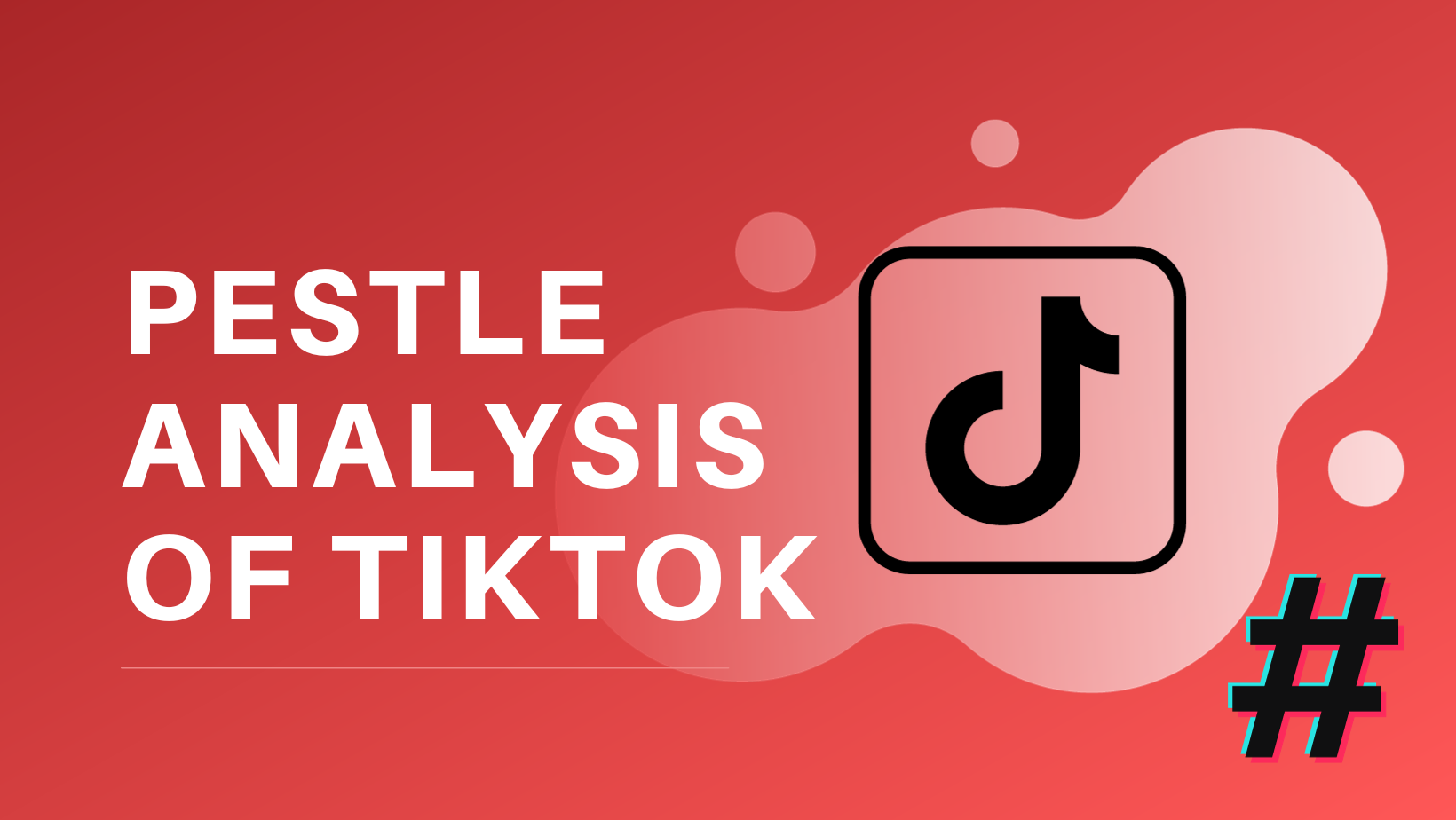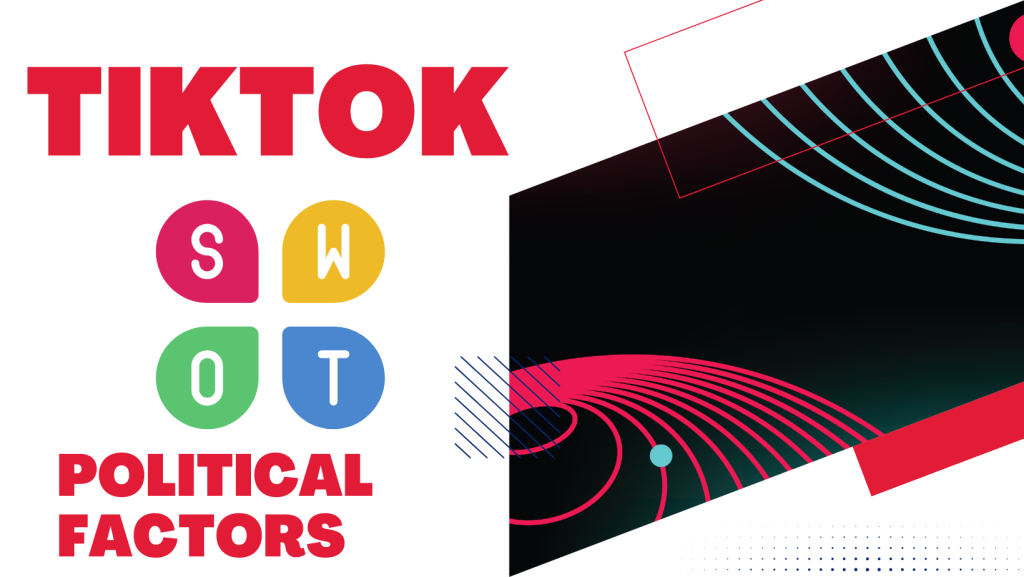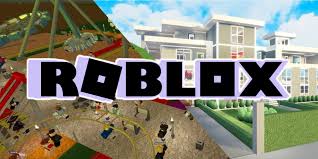Analysis
PESTLE/PESTEL Analysis of TikTok 2024

Understanding services sector when they expand globaly in time of digital world is important. That’s why we have shared here the complete Pestle analysis of TikTok here on irnpost.com. It has covered up some of the factors but still more in depth analysis can be done. If you want us to do it for you or you need any guidance you are welcome. You can contact us via contact us page on our website.
Political Factors Affecting TikTok

TikTok is a global company with over 1.1 billion active users. It is important to note that the political factors affecting TikTok vary from country to country. In some countries, TikTok is facing significant challenges, while in other countries it is operating relatively freely. It is too early to say what the long-term impact of these political factors will be on TikTok.
The political factors affecting TikTok are likely to continue to evolve in the coming months and years. It remains to be seen how TikTok will navigate these challenges and what the long-term impact will be on its business.
United States: The Biden administration is still working on a plan to address national security concerns related to TikTok. In March 2023, the administration gave government agencies 30 days to ensure that they do not have TikTok on federal devices. The administration has also been pressuring TikTok to divest from its Chinese parent company, ByteDance. TikTok has so far resisted these demands.
India: TikTok remains banned in India. The Indian government banned the app in June 2020, citing national security concerns. The ban has been challenged in court, but the case has not yet been resolved.
Pakistan: TikTok was banned in Pakistan in July 2021, but the ban was lifted in January 2023. The Pakistani government banned TikTok over concerns about “immoral content.”
Other countries: A number of other countries have also taken steps to regulate or ban TikTok. For example, Australia has banned TikTok on government devices, and the United Kingdom has ordered TikTok to make changes to its data protection practices.
TikTok’s response: TikTok has taken a number of steps to address the political challenges it is facing. For example, TikTok has appointed a new CEO, Shou Zi Chew, who is a US citizen. TikTok has also said that it is committed to transparency and accountability. Some critics argue that TikTok has not done enough to address national security concerns and that it is still too closely aligned with the Chinese government.
The rise of TikTok as a political platform
TikTok has become increasingly important as a political platform in recent years. This is due in part to the platform’s popularity among younger users, who are a key demographic in many elections. TikTok has also been used to organize protests and social movements. For example, TikTok was used to organize the Black Lives Matter protests in 2020.
The role of TikTok in foreign policy
US government has expressed concerns that TikTok could be used by the Chinese government to spread propaganda or to spy on American users. The US government has also considered banning TikTok or forcing it to divest from its Chinese parent company. So, this is where now TikTok will have to handle the foreign policy issue and many more such issues may come in future.
Economical Factors Affecting TikTok
After looking into Political factors now we will look into economical factors that are affecting TikTok globally. Remember we are looking here external factors that are affecting the company as this is what Pestle analysis of tiktok is all about.
Advertising revenue: TikTok is one of the fastest-growing social media platforms in terms of advertising revenue. In 2022, the platform brought in $9.9 billion in advertising revenue, a 155% increase over the prior year. This growth is expected to continue in 2023, with TikTok poised to become one of the top advertising platforms in the world.
E-commerce: TikTok is also becoming a major e-commerce platform. In 2022, TikTok users spent over $100 billion on goods and services through the platform. This growth is being driven by TikTok’s unique ability to connect brands with consumers in a more authentic and engaging way.
Creator economy: TikTok is also creating a new creator economy. Millions of TikTok users are now generating income from the platform through brand sponsorships, merchandise sales, and other means. This is creating new economic opportunities for people all over the world.
Global competition: TikTok faces increasing competition from other social media platforms, such as Instagram Reels and YouTube Shorts. These platforms are all vying for the attention of TikTok’s users and advertisers. This competition could put pressure on TikTok’s advertising revenue and e-commerce growth.
Regulatory scrutiny: TikTok is also facing increasing regulatory scrutiny from governments around the world. This scrutiny is focused on TikTok’s data collection and privacy practices. If TikTok is forced to make changes to its data collection or privacy practices, it could impact its ability to operate in certain markets and could also impact its advertising revenue and e-commerce growth.
TikTok Shop: TikTok has also started now its shop where users can now buy, sell and discover products on same platform. It has given the advantage to business owners and content creators to be on the same platform and earn money. While doing so, Tiktok will also bear foreign exchange charges and other taxes.
Now, lets move forward to social factors to get a better understanding of whole pestel analysis of tiktok.
Social Factors Affecting TikTok
Here are some of the social factors affecting TikTok according to (2023-24) current stats globally:
User demographics: TikTok’s user base is primarily young people, with over 60% of users under the age of 30. This has a significant impact on the platform’s culture and content. For example, TikTok is known for its trends and challenges, which are often created and popularized by young users.
Social media consumption: TikTok’s rise in popularity has been driven in part by changing social media consumption habits. Users are increasingly spending more time on mobile devices and consuming shorter-form content. TikTok’s short-form video format is well-suited to these trends.
Social interaction: TikTok is a highly social platform. Users can interact with each other through comments, likes, and shares. They can also form groups and communities around shared interests. This social interaction is a key driver of engagement and user retention.
Cultural diversity: TikTok is a global platform with users from all over the world. This diversity is reflected in the platform’s content, which includes a wide range of videos from different cultures and perspectives. This cultural diversity is one of TikTok’s strengths, as it makes the platform more appealing to a wider range of users.
Social movements: TikTok has also been used to raise awareness of social movements and issues. For example, the platform was used to spread awareness of the Black Lives Matter movement and the COVID-19 pandemic. TikTok’s ability to amplify social movements is one of its potential social impacts.
Overall, TikTok is a social platform that is shaped by and reflective of the social factors that affect its users. The platform’s user demographics, social media consumption habits, and cultural diversity are all important factors that influence its popularity and impact.
Here are some additional social factors that may affect TikTok in the future:
Increased competition from other social media platforms: As mentioned earlier, TikTok faces increasing competition from other social media platforms, such as Instagram Reels and YouTube Shorts. These platforms are all vying for the attention of TikTok’s users and advertisers. This competition could put pressure on TikTok to change its platform or content in order to remain competitive.
Regulatory scrutiny: TikTok is also facing increasing regulatory scrutiny from governments around the world. This scrutiny is focused on TikTok’s data collection and privacy practices. If TikTok is forced to make changes to its data collection or privacy practices, it could impact the platform’s popularity and social impact.
The rise of the metaverse: The metaverse is a virtual world that is still under development, but it has the potential to revolutionize social media. If the metaverse becomes popular, it could impact TikTok’s popularity and social impact. TikTok may need to adapt its platform to the metaverse in order to remain competitive.
Let’s move further to the technological factors in order to understand pestle analysis of TikTok company.
Technological Factors Affecting TikTok
Artificial intelligence (AI): TikTok uses AI extensively to power its recommendation algorithm. This algorithm is responsible for showing users the videos that are most likely to interest them. TikTok is also using AI to develop new features, such as its ability to translate videos into different languages.
Cloud computing: TikTok relies on cloud computing to store and deliver its content. This allows TikTok to scale its platform rapidly and to provide users with a high-quality experience.
5G: The rollout of 5G networks is expected to benefit TikTok in a number of ways. 5G will allow users to stream TikTok videos in higher quality and at faster speeds. It will also enable TikTok to develop new features, such as augmented reality (AR) and virtual reality (VR) effects.
Edge computing: Edge computing is a technology that brings computing and data storage closer to the devices where data is generated and consumed. TikTok is exploring the use of edge computing to improve its performance and to reduce latency.
Blockchain: TikTok is also exploring the use of blockchain technology to develop new features and to improve the security of its platform. For example, TikTok could use blockchain to create a decentralized marketplace for TikTok creators to sell their content.
Technological factors are having a positive impact on TikTok. AI, cloud computing, 5G, edge computing, and blockchain are all technologies that TikTok is using to improve its platform and to create new opportunities for its users.
The rise of the metaverse: As mentioned earlier, the metaverse is a virtual world that is still under development, but it has the potential to revolutionize social media. If the metaverse becomes popular, it could impact TikTok’s technological infrastructure and content strategy. TikTok may need to adapt its platform to the metaverse in order to remain competitive.
The development of new mobile devices: The development of new mobile devices, such as foldable phones and VR headsets, could also impact TikTok. These new devices could create new opportunities for TikTok to deliver content to its users. TikTok may need to adapt its platform to support these new devices in order to remain competitive.
It will be interesting to see how TikTok continues to innovate and use technology to improve its platform and to create new experiences for its users.
Legal Factors Affecting TikTok
Lets look into now what are the legal factors that are affecting TikTok inc.
Data privacy and security: TikTok is owned by ByteDance, a Chinese company. This has raised concerns about the security of user data and the potential for the Chinese government to access that data. TikTok has stated that it stores US user data in the US and Singapore, and that it does not share data with the Chinese government. However, some governments, such as the US and India, have expressed concerns about TikTok’s data privacy and security practices.
Content moderation: TikTok has also been criticized for its content moderation practices. The platform has been accused of allowing harmful content, such as misinformation, hate speech, and child sexual abuse content, to remain on the platform. TikTok has stated that it is committed to removing harmful content, but it has been criticized for not doing enough to enforce its policies.
National security: Some governments, such as the US, have also expressed concerns about the potential for TikTok to be used for espionage or disinformation. TikTok has stated that it is not a threat to national security, but it has been banned in some countries, such as India.
In addition to these global factors, TikTok also faces legal challenges in specific countries. For example, in the US, TikTok is facing a number of lawsuits alleging that it violated children’s privacy laws. TikTok is also facing a lawsuit from the US government alleging that it is a national security threat.
Legal landscape for TikTok is complex and challenging. The platform faces a number of legal challenges related to data privacy and security, content moderation, and national security. TikTok will need to address these challenges in order to continue to operate in certain markets and to achieve its long-term goals.
The development of new laws and regulations: Governments around the world are developing new laws and regulations to address the challenges posed by social media platforms. These new laws and regulations could impact TikTok’s ability to operate in certain markets and could also impact its content strategy.
The outcome of legal challenges: The outcome of the legal challenges that TikTok is facing could also have a significant impact on the platform. If TikTok is found to have violated laws or regulations, it could face fines, penalties, and could even be banned in certain markets.
Impact of Environmental Factors on TikTok
Energy consumption: TikTok is a data-intensive platform, and its servers consume a significant amount of energy. This energy consumption contributes to climate change.
E-waste: TikTok users generate a significant amount of e-waste, as they often upgrade their smartphones and other devices in order to access the latest TikTok features.
Water usage: TikTok’s data centers consume a significant amount of water to cool their servers. This water consumption can put a strain on water resources in certain regions.
Pollution: TikTok’s data centers and other facilities can generate air and water pollution.
In addition to these global factors, TikTok also faces environmental challenges in specific countries. For example, in China, TikTok is facing pressure to reduce its energy consumption and water usage.
Overall, TikTok is aware of the environmental impact of its operations and is taking steps to reduce it. For example, TikTok is using renewable energy to power its data centers and is working to reduce its e-waste. However, TikTok still faces a number of environmental challenges.
Some additional environmental factors that may affect TikTok in the future:
The development of new technologies: The development of new technologies, such as more energy-efficient servers and renewable energy sources, could help TikTok to reduce its environmental impact. However, new technologies can also have a negative environmental impact, such as the mining of rare earth metals for batteries and other electronic components.
Government regulations: Governments around the world are developing new regulations to address the environmental impact of data centers and other technology companies. These regulations could impact TikTok’s ability to operate in certain markets and could also impact its costs.
References used in this article are from Tiktok.com and statista.com.


















